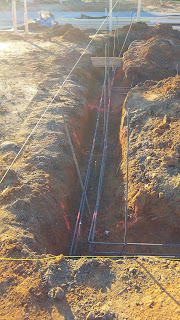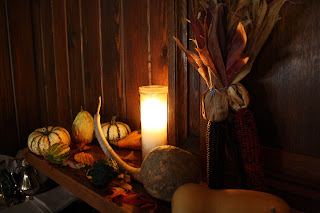Today marks 8 months since the tornado ripped through Tuscaloosa, Alabama. I have lived in the Tuscaloosa area for a little over 9 years. When I moved here, I did not intend to stay. But as many things go, my plans changed and flexed and Tuscaloosa/Northport is now my home. So in the aftermath of April 27th, I was stunned to see the damage caused to my home city.
Since April 27, 2011, much of my time has been consumed by Tornado Recovery work. It began immediately after the storm. I had watched a tornado move through downtown Cullman about an hour or so before the Tornado hit Tuscaloosa. I watched the television as the storm approached. Right before I lost my TV signal, I saw enough to know to send a text message to the student residents at Canterbury Chapel that the storm was coming toward them. I then switched to listening to the radio, and listened as the newscasters described the Tornado moving through town and that it looked like it might have hit DCH Hospital and the University of Alabama. Though James Spann had not yet announced that I could leave my place of safety, I grabbed a flashlight and headed into town. I had no idea what I would find.
As I crossed the bridge into Tuscaloosa, I noticed that the street lights were out. I could see no damage and I breathed a sigh of relief when I could see that DCH Hospital was still standing. I turned off the main road to head to Canterbury Chapel. I was relieved once again to see that the Chapel was intact and to find the student residents there and safe. No one had any idea of the extent of the damage.
Two church members were at the Chapel, a gentleman named Thad, his daughter, and their dachshund. They had lived behind Hobby Lobby and their house was destroyed. They had walked/gotten a ride to the Chapel. Thad had blood on his shirt and a bandage on his arm. I sent someone to get a First Aid kit and a clean shirt. Thad insisted that he was alright, but I was doubtful because it was a lot of blood. When I pulled off the bandage, I knew immediately that Thad needed to go to the hospital. One of Canterbury's students was a nursing student. She cleaned up Thad's arm and put a new bandage on, and myself, Thad, and Holly, a law student, loaded up to go to the hospital.
When we got to DCH Hospital, they were in emergency mode. Thad was triaged and we were taken somewhere to wait. As we walked through the halls, there were people everywhere. We walked past someone who was on a gurney and being treated. That person's hand had nearly been severed. I kept my head down, and just kept walking. Once we were in the back, I watched as more and more folks came in. I talked to a guy that described his apartment complex in Alberta City being destroyed and having to pull someone out of the rubble. Thad was stitched up by a heart doctor. Doctors and nurses from all over Tuscaloosa County had headed to the hospital. And we managed to make it out of DCH in about 2 hours. The only information they took from Thad was his name, they didn't ask for any billing information.
When it was time to leave, the nurse told me to go get my car and bring it to the back. She said that there was a crowd out front, and they didn't want us to walk through that. The nurse took me to a side door to get out. What I saw when I walked outside was a completely different world than had been there before. There were people everywhere. Folks with their kids, their dogs, with bags and suit cases. The National Guard was there, and I had to wait as a helicopter took off. When I got to my car, I was able to look down University Boulevard towards Alberta City. I could see a line of folks walking from Alberta City towards the hospital. I got into my car and picked Thad and Holly up and went back to to Canterbury.
When I returned to the Chapel, there were a few more folks there. Marc, the Chaplain had arrived, as well as some more students. The power was still out. And the town was eerily dark. We sat around for a while. We ate what food was there, and shared some drinks. Almost everyone had been accounted for, though there were a few folks we couldn't get on the phone. We decided that it would be best to wait until the morning to go looking for them. A student named Wes came to me and said that he was going to try to go home. I asked him where he lived, and he described his apartment complex in Alberta City. I realized that this was likely the same Apartment complex that the young man at the hospital had described being destroyed. I told Wes that I didn't think he could go home tonight.
I went home. I was drained. I had no idea what the morning light would reveal.
And so began my Tornado Recovery work. The next morning I drove and walked to find the unaccounted for parishioners, all of whom were safe. For the next week, I worked out of Canterbury Chapel, coordinating sending supplies to areas where they were need. I attended meetings with clergy of the three churches, and somehow became the diocesan point person on the ground in Tuscaloosa. There were phone conferences, phone calls, and meetings.
This eventually led to the creation of the Episcopal Tornado Recovery Cooperative. Before I knew it we were hosting our first out of town volunteer team. We were receiving donations, and we began figuring out ways that we could help the tornado affected areas. Then there were meetings with the Long Term Recovery Coalition of West Alabama, and being appointed as a Co-Chair of the Case Management Committee. I never knew one person could go to so many meetings.
All of these meetings began to lead to real results. Real people helped. Real work done. And finally on December 1st, all these meetings resulted in the groundbreaking on a Habitat home.
We began our first work day not at ground level, but having to dig below ground level. We dug in the dirt so that a foundation could be laid. On December 17th our starting worksite looked like this:
The foundation had been laid, and it was time to start building up. First one wall went up and then another.
The way we built these walls was by using "storyboards." These were literally boards that were laid out along the outside of the building that were labeled with what was supposed to be there. These storyboards were in one sense the story of the house. They told the story of how each wall was built.
But this wasn't the whole story. The rest of the story of this house began on April 27th when the homeowners survived the storm, though their home was destroyed. The story of these house includes all those meetings, and all the work of Habitat and of volunteers to get this house built. The story includes Amy, one of the homeowners, driving nails to build the walls that will soon be her living room. Following all these stories, this was the house at the end of our workday on December 17th:
Eight months after the storm, it is this picture of hope, this story of a home that I would rather tell. While that monster tornado in the first picture is certainly part of the story of this house, it is overshadowed by the story of hope that these walls and rafters tell.



















